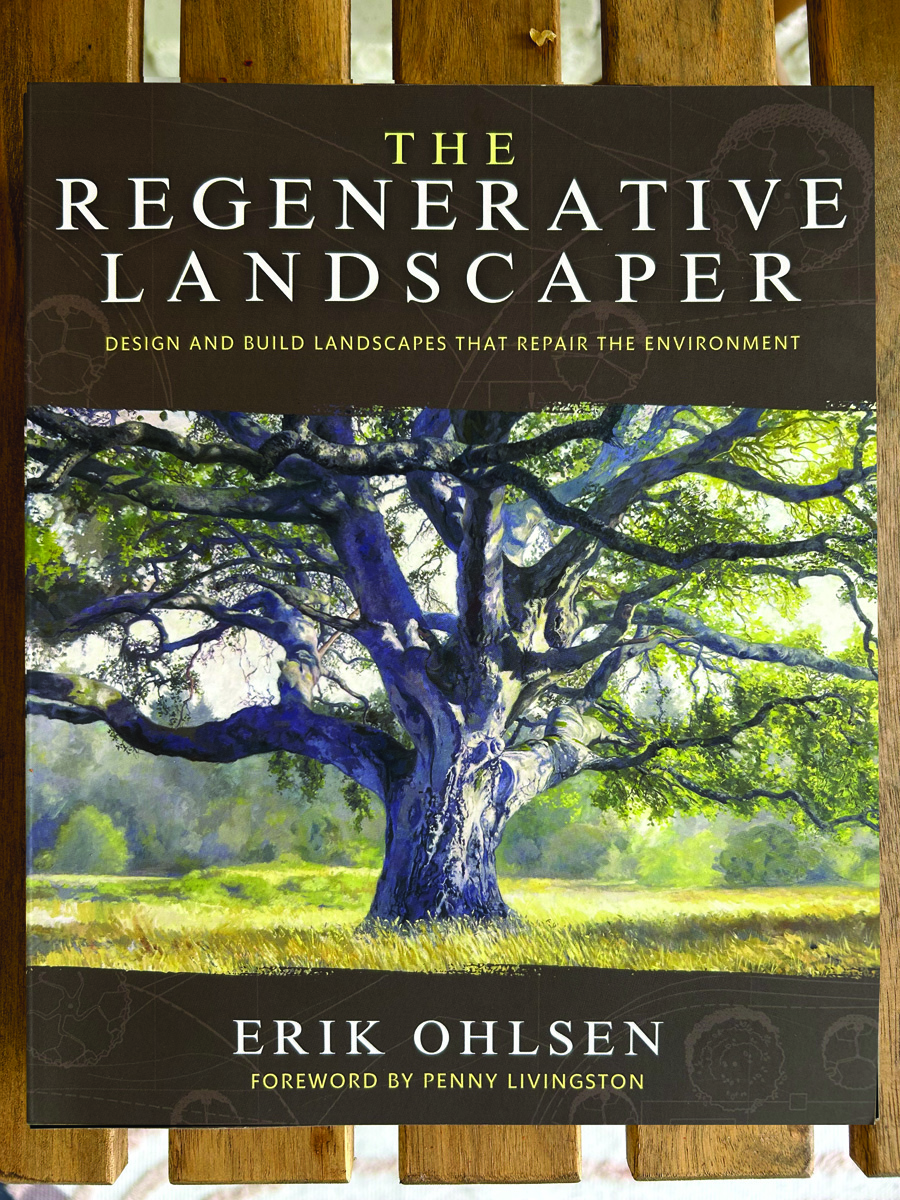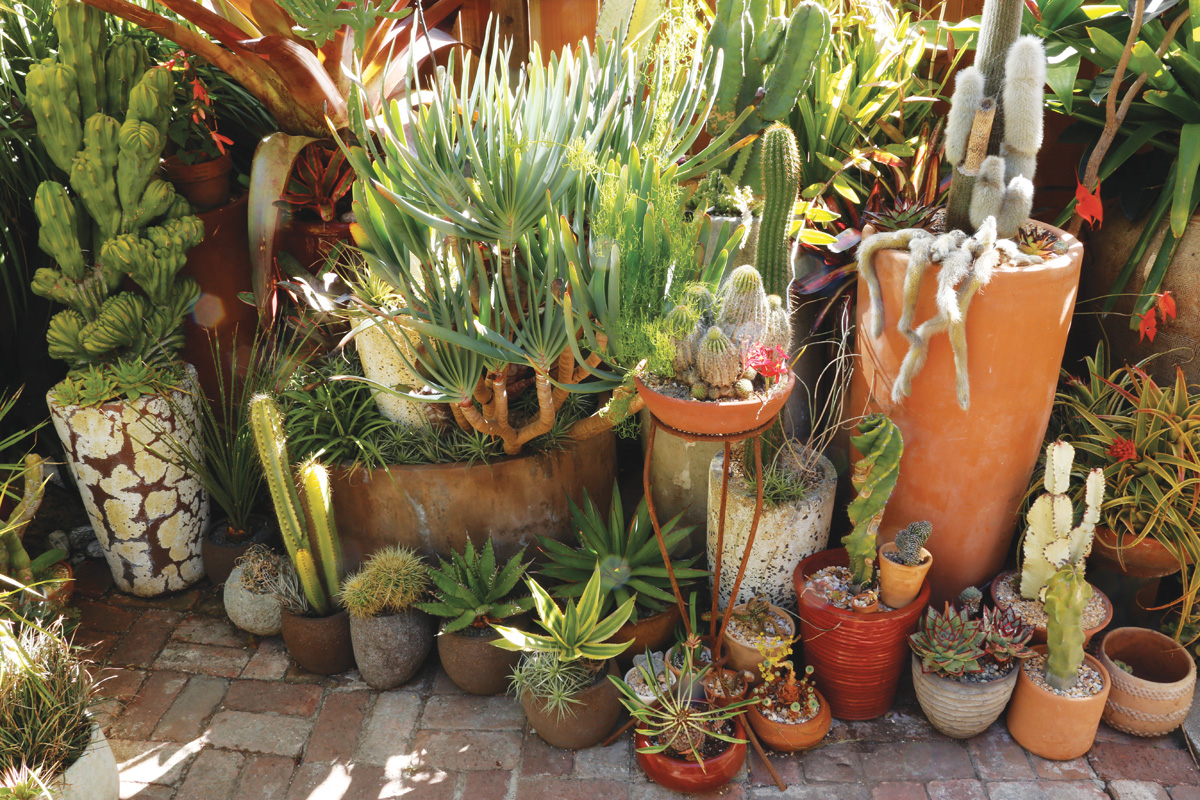
For those of us who garden in small spaces, container gardening strikes an ideal balance between structure and flexibility. Potted plants can be rearranged as often as necessary, which makes it easy to accommodate new additions and to ensure that each plant gets the sunlight or shade it requires. Compared to traditional in-ground beds, container gardens also give us a bit more control over factors such as water, weeds, and pests. I’ve spent the past few decades creating designs for roof decks, balconies, courtyards, and patios in San Francisco. Through this work I have discovered that the key to container gardening success is always the same: finding a mix of appealing plants that are well suited to each garden’s specific climate and light conditions. Using my home garden as a testing ground, I’ve developed some strategies that anyone can use to create lush urban oasis and cohesive container displays that truly stand out from the crowd.

Group plants to maximize their impact
My partner, Bryon, and I garden on a 500-square-foot brick patio in the San Francisco neighborhood known as South of Market (SOMA). The space is surrounded on three sides by buildings, and there is an open parking lot to the south. This means that the patio gets full sun in summer and full shade in winter. While I appreciate and often design minimalist gardens, my personal aesthetic is maximalist. I want my outdoor space at home to look verdant, full, and packed with plants. Even though I’ve been collecting for decades, there are still new cultivars that I want to trial to see which ones truly thrive in pots and put up with conditions such as seasonal shade or intense sun. This invaluable firsthand experience helps me give the best advice on care and placement to my clients.

I also want my patio to look like a true garden and perhaps create the illusion that the plants are not all in pots. I accomplish this by thoughtfully grouping large, medium, and small pots together. Drifts and sweeps of compatible plants make a bigger impact, just as they would do in a traditional bed or border. Container gardening encourages playfulness and experimentation, and the best part is that you don’t need to uproot everything each time you change your mind. At times I feel as if I’m playing a very slow game of Tetris, moving pots around to fit in new acquisitions, repotting the plants that are flourishing into larger containers, and removing failed experiments.

Utilize Valuable Vertical Space and Tiny Pockets
Layering plants with a range of heights will add dimension to any garden. Without different levels of foliage a design will look flat—more like a potted patio than a real garden. Palms, succulents, and ficuses (Ficus spp. and cvs., Zones 10–12) are ideal for creating an upper story in an urban jungle -because they have finite root systems and can thrive long-term in pots (photo above). Some of these statuesque specimens can achieve heights of 10 to 15 feet, which is perfect for giving a garden room a sense of lush urban jungle enclosure.
I did not initially appreciate the concrete warehouse wall that borders our patio on the west side (photo above), but I soon grew to value the protection it provides from the harsh winds blowing off the Pacific. This simple industrial background also shows off the foliage of taller plants, which cast their beautiful shadows across it. An orchid collection mounted on a metal trellis adds another layer of softness and horticultural interest, making the most of what would otherwise be unused vertical space.
After more than 20 years of plotting, planning, and planting here, the bones are all in place and so I’ve been learning to appreciate smaller plants. Tiny succulents, miniature orchids, and little air plants (Tillandsia spp., Zones 10–12, photo right) can be fit into the smallest spaces to add texture and further dimension to a display. Any gardener will appreciate my desire to keep adding plants, and this is one simple way to do it.
Let the Conditions Lead the Way
San Francisco is known for its huge number of microclimates, but no matter where you are it is essential to find plants that will grow well in your garden’s specific conditions. When I moved to this place, I gave away sun-loving grasses, shrubs, and salvias (Salvia spp. and cvs., Zones 3–9) to friends with more space and more consistent sunlight. The survivors from my plant collection led the way forward. Over the years I have continued to build my collection of succulents and other plants that are well adapted to the light and exposure they get in their particular corners of the garden.

Even within the same species, different cultivars may have a range of light requirements, so I have been able to create continuity by using favorite plant groups such as palms, orchids, succulents, and begonias (Begonia spp. and cvs., Zones 9–11) throughout the space, arranged in strategic groupings based on their preferred growing conditions. I do all of my watering by hand, and I often arrange plants so that overflow from one pot drains into another. The repeating rosette patterns of aloes (Aloe spp. and cvs., Zones 9–11), palms, and bromeliads lend additional cohesiveness to the overall design.
A well-designed container grouping can transform almost any space, bringing beauty and a sense of seclusion into an everyday environment. Be deliberate with your plant choices, but don’t be afraid to experiment. The freedom to try new things is one of the best parts of container gardening.

| Design Ideas |
Small details make all the difference in a maximalist urban oasis
To keep a container display looking cohesive, it is helpful to establish ground rules to guide your aesthetic decisions. Here are some of Clarke’s rules of thumb to create an attractive indoor urban jungle.
- Constrain your container colors. Clarke uses pots in a variety of earth tones to mimic the ground, mixing and matching many different warm hues that coordinate effortlessly with each other.
- Use foliage to provide focus and structure. In a mostly green garden such as this, groups of silvery, dark, or brightly colored foliage stand out even more.
- Create moments of interest. Fleeting flowers in this garden are few and far between. When they do appear, they tend to be either pink or white, with a few bursts of orange and red for seasonal drama.
- Fertilize at least once per year. Palms really appreciate a good seasonal feeding, but most of the plants in this garden require only annual fertilization.
- Shape or prune judiciously. Overpruning will detract from your enjoyment of the garden during the warmer months.
Clarke de Mornay is a designer and “plant slinger” at Flora Grubb Gardens in San Francisco.
Fine Gardening Recommended Products

The Regenerative Landscaper: Design and Build Landscapes That Repair the Environment
Fine Gardening receives a commission for items purchased through links on this site, including Amazon Associates and other affiliate advertising programs.

Organo Republic 16 Perennial Wildflower Seeds Mix for Indoor & Outdoors
Fine Gardening receives a commission for items purchased through links on this site, including Amazon Associates and other affiliate advertising programs.

Planting in a Post-Wild World: Designing Plant Communities for Resilient Landscapes
Fine Gardening receives a commission for items purchased through links on this site, including Amazon Associates and other affiliate advertising programs.





















Comments
Log in or create an account to post a comment.
Sign up Log in